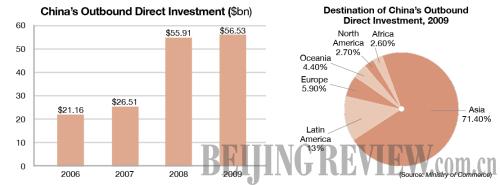|

On September 15, China's Anshan Iron & Steel Group Corp. (Ansteel) inked an agreement with the Mississippi-based Steel Development Co. (SDC) to jointly build a steel plant in the United States, which could produce 300,000 tons of rebar annually.
But the deal was nearly derailed in early July when 52 U.S. congressmen urged the Obama administration to block the investment, claiming it would hurt U.S. jobs and threaten national security.
The concerns are unfounded, said John Watkins, Chairman of the American Chamber of Commerce in China. "SDC will produce rebar from recycled steel, and the process itself is low-tech. In addition, Anshan will take no more than a 20-percent stake and have no management control," he said.
As Chinese companies push overseas, they face simmering risks of protectionist restrictions, as well as political risks like riots and wars. In defense, it is necessary to build a reliable insurance system to protect the interests of investors, said James X. Zhan, Director of Davison of Investment and Enterprise under the United Nations Conference on Trade and Development.
It is just a matter of time before more Chinese brands enjoy global recognition, said Zuo Xiaolei, chief economist at the Beijing-based China Galaxy Securities Co. Ltd. To achieve that, they need to move up the learning curve quickly and gain experiences with cross-cultural management, she said.
The entrepreneurs should have a clear strategy of development before expanding overseas, said Guo Tianyong, Director of the Research Center of China's Banking Industry under the Central University of Finance and Economics.
The Japanese, for instance, would usually set up an office in the target country and then spend years making preparations for substantial expansions, he said.
For M&As, it is safer to obtain a minority stake or simply garner core technologies than to acquire the whole company, said Guo.
| 